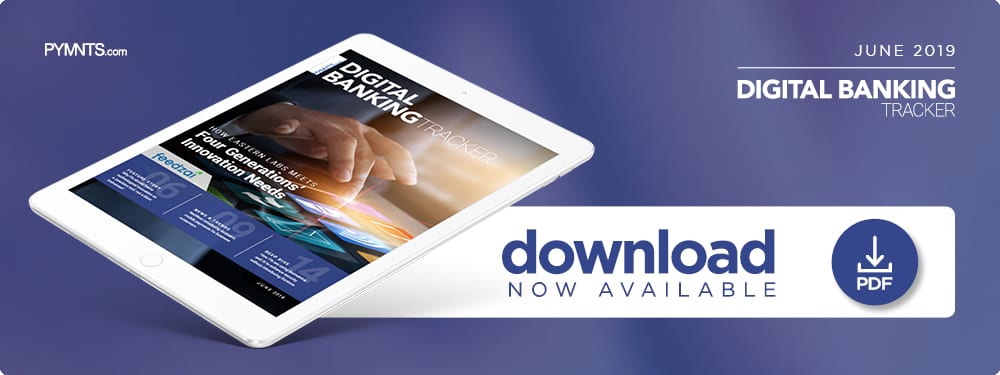Approximately 46 percent of Americans have boosted their mobile banking usage in the past year, and mobile banking apps are used most by consumers. While the technology’s rise has pushed many to expect more from their banks, financial institutions (FIs) have struggled to roll out innovations, and bypass legacy infrastructures. This begs the question: How can centuries-old banks leverage technology to better serve consumers?
FIs can start by framing technological innovation as a precision tool rather than a blunt instrument, said Ashley Nagle Eknaian, chief digital strategist and head of Eastern Labs for Eastern Bank. Based in Boston, the bank celebrated its 200th anniversary last year, and is the oldest and largest mutual bank in the United States.
In a recent interview with PYMNTS, Eknaian explained that FIs must avoid treating technology as a catch-all fix, and instead tailor solutions to specific customer needs.
“Technology plays a major role in how banks operate today,” she said. “At Eastern Labs, we’re focused on the future of banking, and anticipating what needs consumers may have, what challenges technology can help us solve and how we respond.”
Approaching Technology In The Digital Age
Advertisement: Scroll to Continue
FIs, used to years-long innovation processes, are now facing technological advancements that present a dizzying array of possibilities. Eknaian said Eastern Bank directs those possibilities toward what its customers are really seeking.
“It’s sometimes like being a kid in a candy store — there are many solutions available out there, but you do have to prioritize,” she said. “What I think about is identifying friction points for customers. In the small business space, for example, how can [artificial] intelligence [AI] tools and services help us innovate or solve challenges to deliver a fast, simple and convenient banking experience? Are there ways we can give the customer a next-generation product?”
Small businesses are an important focus for Eastern Labs, which released an express loan service for small businesses as its first product before Eknaian’s arrival. She noted that Eastern will continue to focus on innovations in this area as AI, blockchain and other technologies progress, but she cautioned that innovation for innovation’s sake would not yield the intended results.
Eastern applies the same approach to the new products and services it offers retail consumers. Nowadays, more people prefer to bank entirely online, but there are still those who like in-person contact at branch locations. Eknaian said customers expect speed and personalization, no matter the channel.
“The blend of physical and digital is really important,” Eknaian explained. “I think a lot of people think of it as, ‘Is it digital, is it branches, it’s one or the other?’ We see both as a real complement to each other.”
She said Eastern Bank is experimenting with using several new digital technologies and store concepts to augment its physical presence. These innovations include one location the size of an old-school photo booth that features virtual bankers and onsite staff members.
“The great example I like to use is Apple. Apple doesn’t have to have Apple Stores,” Eknaian said. “They choose to have an in-store experience because they want to connect with their customers, and they want their customers to be able to touch and feel their products, and they also have very powerful digital experiences. Banks should think about their channels in the same way.”
These updated branches offer improved personalization during the banking experience, and such offerings are fast becoming table stakes for banks that are looking to stay competitive.
The Future Of Banking And The Generational Divide
Technology is going to be crucial in meeting different banking customers’ distinct needs. Eknaian noted that AI and automation are likely to take on much more important roles over the next decade or so.
“We’re going to have four generations of customers: Gen Z, millennials, Gen X and baby boomers,” she said. “How do we build relevant offerings across that spectrum of generations? The pace of change is going to continue to accelerate in the next couple of years, and will span across all technologies. You’re going to see [more] insights, more tools that have sort of AI, ML, NLP backing.”
Whatever the technology, banks will need to approach innovation with a careful eye toward identifying the actual customer needs that require solutions. The FIs that continue to compete in this area will be the leaders that can anticipate and solve these needs before they happen.





